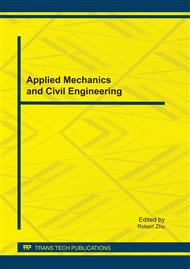[1]
S. Q. Aziz, H. A. Aziz, M. S. Yusoff, M. J. Bashir and M. Umar, Leachate characterization in semi-aerobic and anaerobic sanitary landfills: A comparative study, Journal of Environmental Management, 91 (2010) 2608-2614.
DOI: 10.1016/j.jenvman.2010.07.042
Google Scholar
[2]
R. He, A. D. Ruan, C. J. Jiang and D. S. Shen, Responses of oxidation rate and microbial communities to methane in simulated landfill cover soil microcosms, Bioresource Technology, 99 (2008) 7192-7199.
DOI: 10.1016/j.biortech.2007.12.066
Google Scholar
[3]
R. Valencia, W. Van Der Zon, H. Woelders, H. J. Lubberding and H. J. Gijzen, The effect of hydraulic conditions on waste stabilization in bioreactor landfill simulators, Bioresource Technology, 100 (2009) 1754-1761.
DOI: 10.1016/j.biortech.2008.09.055
Google Scholar
[4]
N. J. Themelis and P. A. Ulloa, Methane generation in landfills, Renewable Energy, 32 (2007) 1243-1257
DOI: 10.1016/j.renene.2006.04.020
Google Scholar
[5]
S. Manfredi and T. H. Christensen, Environmental assessment of solid waste landfilling technologies by means of LCA-modeling, Waste Management, 29 (2009) 32-43.
DOI: 10.1016/j.wasman.2008.02.021
Google Scholar
[6]
Q. B. Li, D. Liu, F. Ou Yang and Z. Y. Han, Acceleration the stabilization of waste in bioreactor landfill by sequential anaerobic and semi-aerobic operation, Environmental Science, 27 (2006) 371-375. (In Chinese)
Google Scholar
[7]
D. A. De La Rosa, A. Velasco and A.Rosas, Total gaseous mercury and volatile organic compounds measurements at five municipal solid waste disposal sites surrounding the Mexico City Metropolitan Area, Atmospheric Environment, 40 (2006) 2079-2088.
DOI: 10.1016/j.atmosenv.2005.11.055
Google Scholar
[8]
T. L. Chong, Y. Matsufuji and M. N. Hassan, Implementation of the semi-aerobic landfill system(Fukuoka method) in developing countries: A Malaysia cost analysis, Waste Management, 25 (2005) 702-711.
DOI: 10.1016/j.wasman.2005.01.008
Google Scholar
[9]
M. Wichern, C. Lindenblatt, M. Lubken and H. Hom, Experimental results and mathematical modelling of an autotrophic and heterotrophic biofilm in a sand filter treating landfill leachate and municipal wastewater, Water Research 42 (2008) 3899-3999.
DOI: 10.1016/j.watres.2008.05.031
Google Scholar
[10]
T. Shimaoka, Y. Matsufuji and M. Hanashima, Mechanism of self-stabilization of semi-aerobic landfill, Proceedings of the 5th Annual Landfill Symposium, (Silver Spring, MD, USA, 2000) 171-184.
Google Scholar
[11]
Y. Q. Liu, Q. F. Huang, L. Dong and Q. Wang, Determination of oxygen consuming radius in semi-aerobic landfilling structure, China Environmental Science, 26 (2006) Suppl. 19-22. (In Chinese)
Google Scholar
[12]
S. C. Ding, Q. F. Huang, Q. H. Wang and Q. Wang, Numerical Simulation of the Diffusion of Oxygen in Semi-Aerobic Landfills, Research of Environmental Sciences, 21 (2008) 16-20. (In Chinese)
Google Scholar
[13]
F. Li, Q. F. Huang, Z. Q. Zhang and Q. Wang, Spatial variability of temperature in semi-aerobic landfilling structure, Chinese Journal of Applied Ecology, 17 (2006) 1291-1294. (In Chinese)
Google Scholar
[14]
H.Masataka, Heat and gas flow analysis in semiaerobic landfill, J. Environ. Eng. Divi., 107 (1981) 1-9.
Google Scholar
[15]
H. Zhang, X. Zhang, J. Liang G. H. Li and R. S. Zhang, Select ion and performance estimation of media for subsurface constructed wetlands to treat oil-contaminated surface water, Acta Scientiae Circumstantiae, 27 (2007) 1121-1126. (In Chinese)
Google Scholar
[16]
R. Cossu, R. Raga and D. Rossetti, The PAF model: an integrated approach for landfill sustainability, Waste Management, 23 (2003) 37-44.
DOI: 10.1016/s0956-053x(02)00147-2
Google Scholar
[17]
V. Vigneron, M. Ponthieu, G. Barina, J. M. Audic, C. Duquennoi, et al. Nitrate and nitrite injection during municipal solid waste anaerobic biodegradation, Waste Management, 27 (2006) 778-791.
DOI: 10.1016/j.wasman.2006.02.020
Google Scholar
[18]
G. A. Price, M. A. Barlaz and G. R. Hater, Nitrogen management in bioreactor landfills, Waste Management, 23 (2003) 675-688.
DOI: 10.1016/s0956-053x(03)00104-1
Google Scholar


